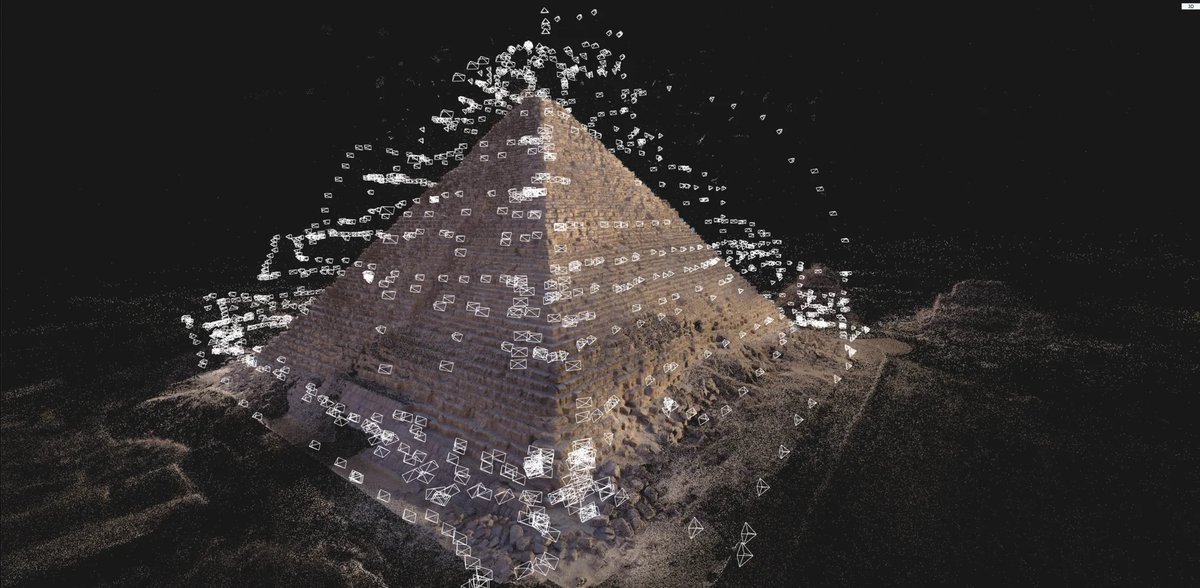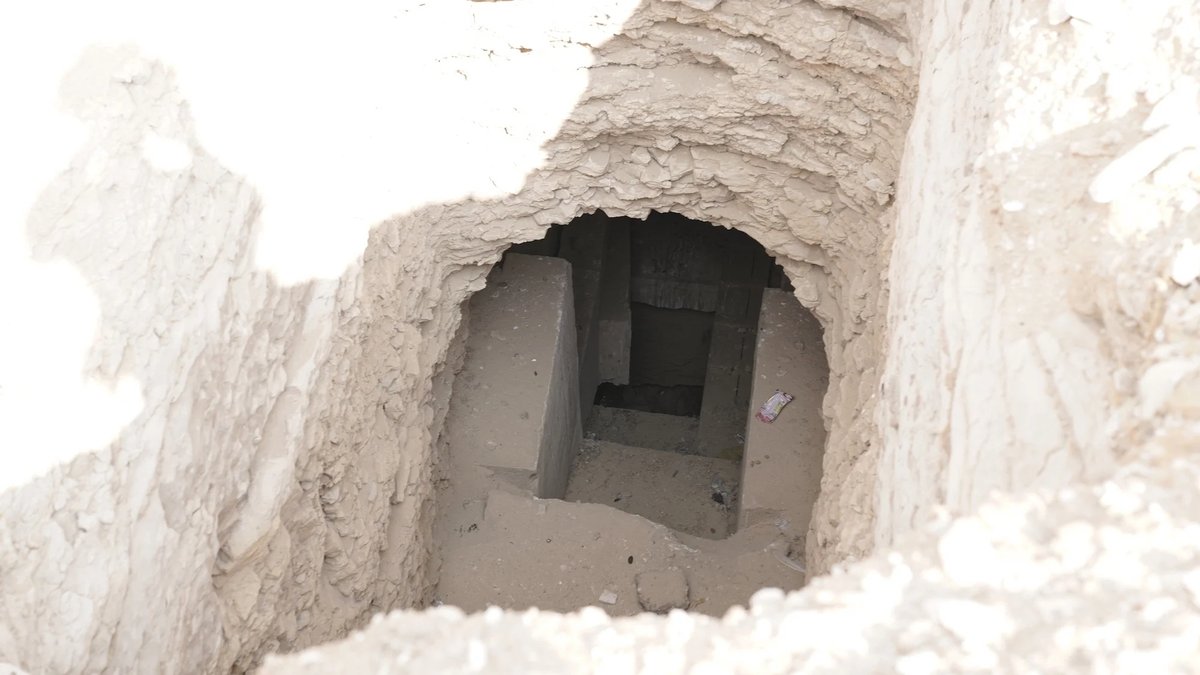
New Possibilities for Ancient Ruins - Worldscan Project's 3D Archives
In this issue, we would like to introduce the research conducted in Egypt in 2018 in the "3D Archiving of Ancient, Cultural, and Natural Heritage Project," in which the World Scan Project uses photogrammetric technology to preserve ancient sites and nature as 3D data.
Why Archive Ancient Ruins?
First of all, why does the Worldscan Project archive archaeological sites with 3D data?
It is because this technology "makes a significant contribution to the preservation and research of archaeological sites. Ruins are destined to weather and disappear over time. However, by scanning them, we can preserve their detailed digital data for future generations, allowing them to be accessed at any time and contributing to new research and archaeological discoveries.

What is the survey method?
The survey is mainly conducted using a drone. The ruins are photographed from various angles from the air. Images number in the tens of thousands per archaeological site. The images taken are pieced together and converted to 3D using Worldscan Project's advanced technology and systems.
In addition, the interior of the site, which the drone cannot reach, is photographed by hand, which takes an enormous amount of time and effort. Photogrammetry is a cutting-edge technology, but in reality, it also has a muddy, analog aspect.

Incidentally, although drones are prohibited by law in Egypt, Worldscan Project was able to obtain special permission after persistent negotiations with the Egyptian government and was able to take photographs using a drone. From this fact, it can be said that Worldscan Project's 3D data is very valuable.

Historical Background and Survey of Archaeological Sites in Egypt
In 2018, Worldscan Project conducted surveys at the Great Pyramid of Giza, the Black Pyramid of Dahshur, the Temple of Hathor at Dendera, and the Temple of Horus at Edfu. Let's take a look at some of the historical background and characteristics of these world-famous sites. It is very interesting!
On the verge of collapse! ~The Black Pyramid of Dahshur
Dahshur is located about 40 kilometers south of Cairo, the capital of Egypt, and stretches across a desert area on the west bank of the Nile River. The Dahshur Complex contains several ancient Egyptian pyramids, among which this pyramid is bizarre in appearance.

Unlike the Great Pyramid and other pyramids built of huge stones, this black pyramid was piled with sun-dried bricks. The pyramid was covered with limestone veneer at the time of construction, but it was taken out in the Middle Ages, and as a result, it lost its external protection and collapsed.
It is now about 72 meters high, and inside there are corridors and the king's inner chamber. As a pyramid built in the late Pyramid Age, including the Three Great Pyramids of Giza, this pyramid is a valuable site symbolizing the transitional period of pyramid architecture.
The 3D data obtained by the Worldscan Project is especially valuable because the pyramid is not open to the public due to the danger of collapse.

The Temple of Hathor at Dendera, a temple associated with Cleopatra
The Temple of Hathor at Dendera is located near the town of Dendera on the west bank of the Nile River, about 60 km north of the Egyptian city of Luxor. The temple has been repeatedly constructed since ancient times and was dedicated to Hathor, the goddess of love and beauty.

The existing temple was built about 2,000 years ago during the Ptolemaic period and is one of the temples that retains most of its original appearance. It is characterized by beautiful blue-toned columns and murals, and the ceiling is decorated with painted images of constellations and astronomy. Inside the temple, there is a crypt, where valuable information about the secrets and rituals of the temple is written on the walls.
The outside of the temple depicts Queen Cleopatra VII and her son Caesarion (Julius Caesar's child) and is also famous as a site associated with Cleopatra.

The Battle for Kingship between Horus and Set - Temple of Horus at Edfu
The Temple of Horus at Edfu is located between the southern Egyptian cities of Aswan and Luxor. It was built about 2,300 years ago during the Ptolemaic period and is dedicated to the falcon-headed god Horus, who presided over the sky.

The huge tower gate remains and is one of the best-preserved temples in ancient Egypt, featuring magnificent sculptures of the god Horus. The walls of the temple are detailed with depictions of the famous battle between the gods Horus and Set, as well as myths surrounding the kingship of the gods. The temple also contains the sanctuary of the Most Holy, where sacred boats were housed, and rooms where priests performed their rituals. The Temple of Horus at Edfu is also one of the most fascinating sights that tourists must visit during their Nile River cruise.

KING of World Heritage Sites! ~The Great Pyramid of Giza
Among the monuments scanned by the Worldscan Project, the most notable is the Great Pyramid of Giza.

The Great Pyramid of King Khufu, which recently made headlines for the discovery of its first new interior space in 83 years, was built in the 26th century B.C. in Giza, Egypt. This pyramid was built as the tomb of the great King Khufu and is approximately 146 meters high. It is considered one of the Seven Wonders of the Ancient World and is the only existing wonder among them.
Initially, it was covered with limestone veneer and had a smooth surface. The interior contains the famous Great Gallery, as well as corridors and several chambers, making it the largest and most complex interior structure of all the pyramids.
The Great Pyramid is still shrouded in mystery and is still being studied, but discoveries and advances in research are expected to be made using the data from the Worldscan project.

3D data pioneers archaeological site research and experience
The 3D data obtained from this survey will be useful not only for archaeology, but also for architecture, engineering, and other fields. Archaeologists and architects may be able to analyze the internal structure of the pyramids, stone working techniques, and architectural planning details to gain unknown knowledge and hint about the architecture.
These sites are also very popular with tourists, but even those who cannot visit the sites in person can experience them in 3D from the comfort of their own homes, thanks to digital data.
In this way, the Worldscan Project's 3D archives are finding applications in cultural heritage preservation awareness and entertainment.

Worldscan Project will continue to contribute to discoveries and the protection of cultural properties by using photogrammetric technology to survey and archive archaeological sites and cultural properties around the world.
You can see more details about the Egyptian survey and 3D technology in several videos.
この記事が気に入ったらサポートをしてみませんか?
